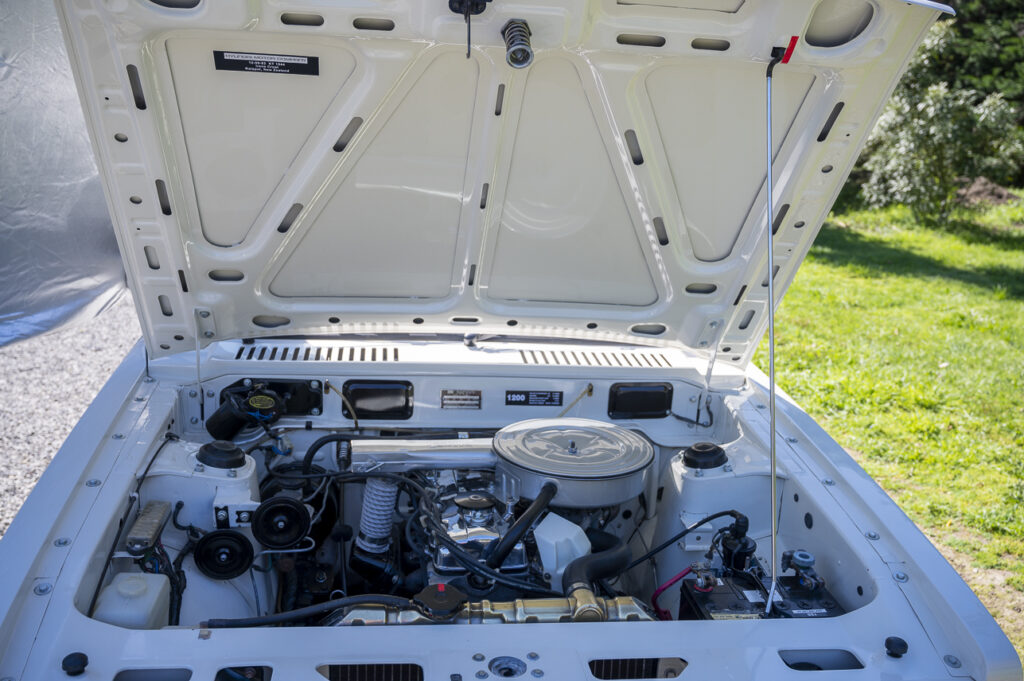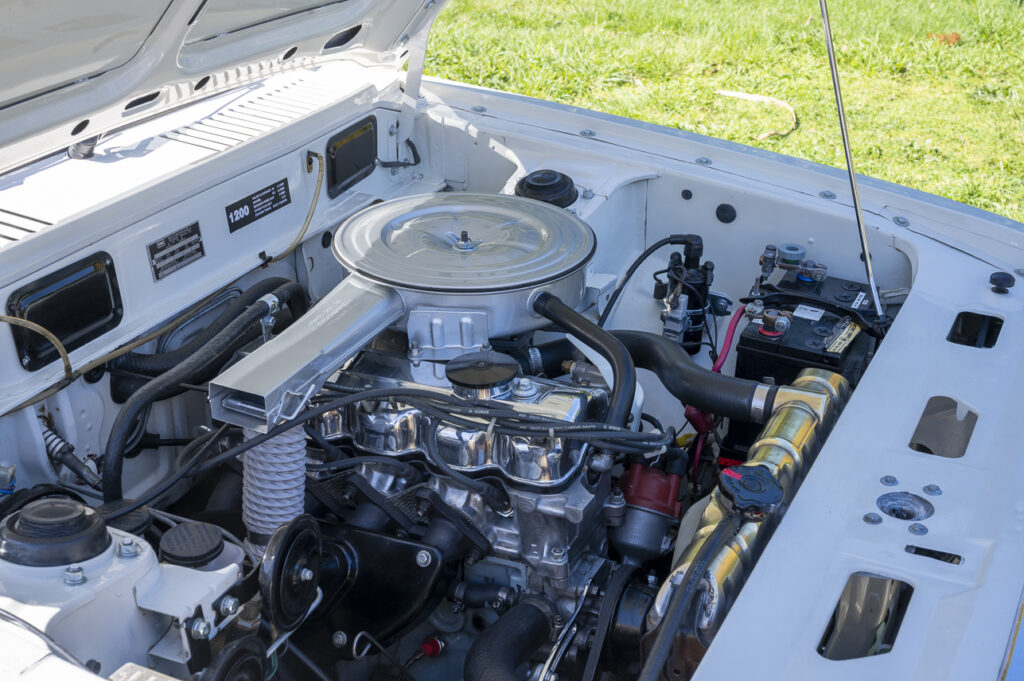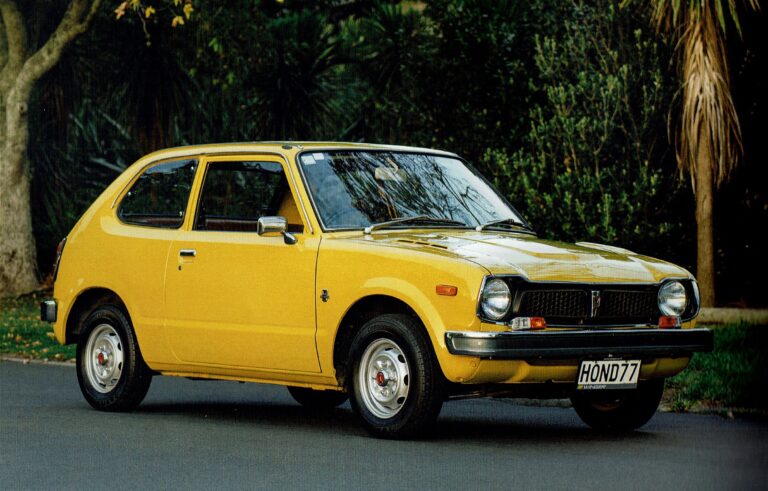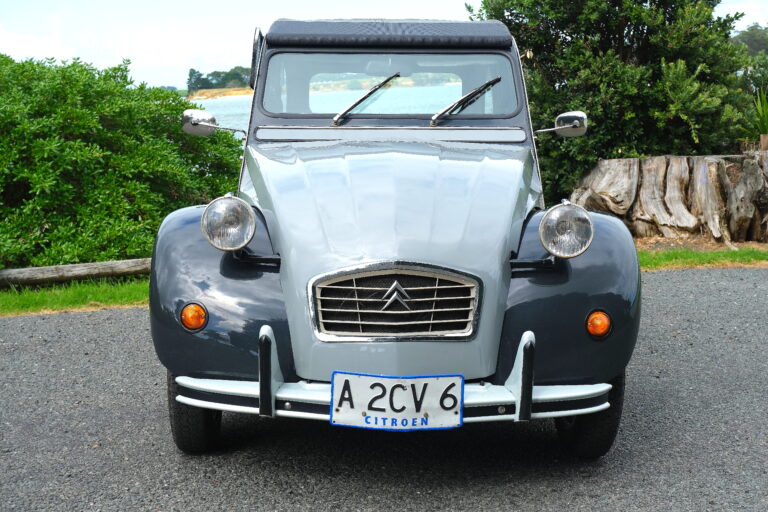Long-time contributor Trevor Stanley-Joblin describes the latest in a long list of cars he has brought back from the brink (many to concours standard) a 1982 Hyundai Pony 1200 TLS
By Trevor Stanley-Joblin, photography Terry Casey
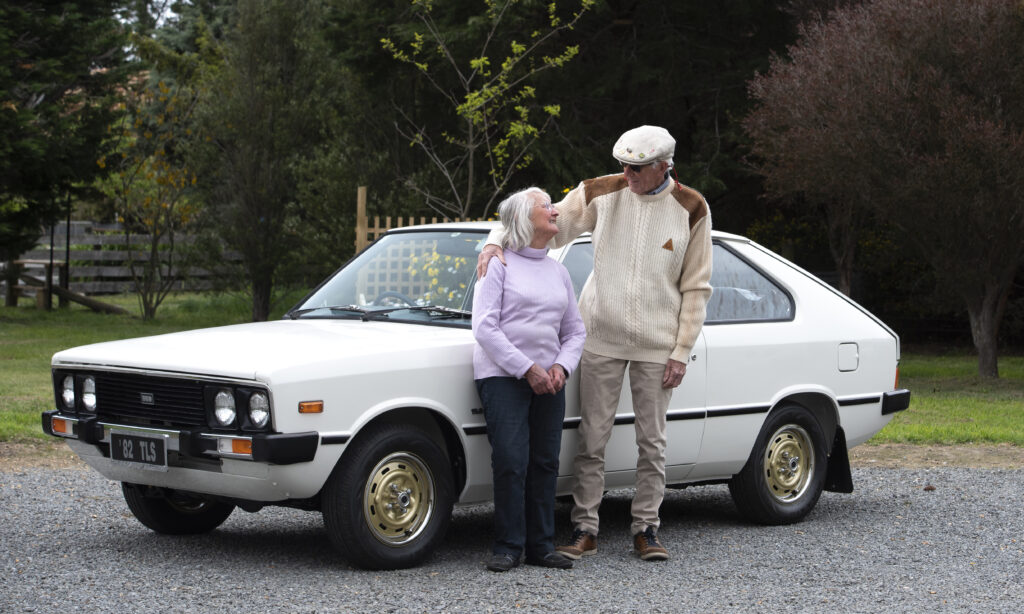
I used to drive past an old 1950s-style service station at Saltwater Creek on State Highway 1 between Leithfield and Waikuku in North Canterbury, attracted by the fact that the owner was slowly restoring it. Parked up for about a decade under the veranda was an oldish three-door hatch. Many readers may recall this old garage because of the large sign on the face board of the front veranda reading in large letters “JESUS CHRIST IS LORD” and in black plastic block letters “SALTWATER CREEK GARAGE”. Over the years, it has become well known in the North Canterbury district. It has been closed for at least 27 years, and the current owner, Mervyn Croat, bought it 28 years ago from Barry Giles who had operated it as a motor workshop and service station for 30 years.
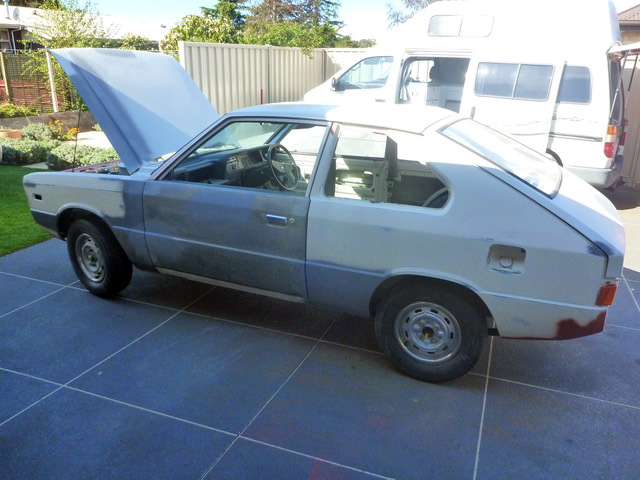

Patient Pony
After passing by this building for many years, I decided to call in and ask the owner about his garage and the car that had been parked there. It was a 1982 Hyundai Pony 1200 TLS that he’d inherited from his mother who had bought it when it was nearly new. I was fortunate enough to buy it from him — many had approached him over the years but were turned away. After sitting out there for that long you could not imagine how dirty it was. At least it had never been wet in all that time. The interior is a mid-blue and almost like new — in fact his mother, Irene, had still retained the original factory-fitted thick clear-plastic cover over the mid-blue vinyl door panels. The seats, front and back, are corduroy cloth running vertically. These were, at the time of initial inspection, covered in rugs. There was just slight fading on the front seat back supports on the side closest to the door windows. It was not until I got the car home and began to clean out the interior that I discovered how original and good the entire upholstery was.
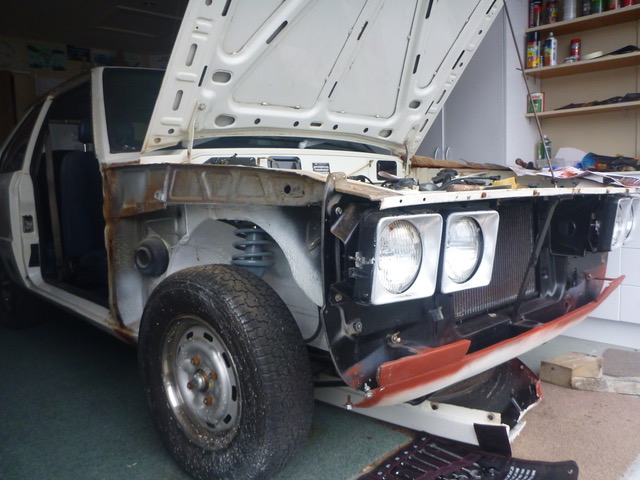
Saved from the knacker’s yard
Is this the oldest Hyundai in New Zealand? I thought that the car — now eligible for VCC and Classic events — was worth saving from the demolition derby boys, where many good condition future classics have ended their life. Being rear-wheel driven, it would have been popular with the boy-racer brigade. Thank goodness I was able to buy it first. I’ve discovered that it’s a first-generation Pony, which were imported from January to September 1982, and cost $10,990. Can any readers help as to whether there is an older model Hyundai in New Zealand? Do you have any memories (or photos) of the old Saltwater Creek Garage in its heyday? Information on either or both would be greatly appreciated. [Email [email protected]]
The sale took place two days after I met Mervyn and inspected the car. I trailered it home in late November 2016 and began a closer inspection after a thorough waterblast. The cobwebs you wouldn’t believe, and the spiders that came out from all directions running for their lives. It took me a good six months to get rid of them.
Generally old vehicles turn out to be nowhere near as good as you first thought. This was just the reverse. What I thought would be holes right through the metal under the loose and flaky paint, was just that — flaky paint. I’m referring to all the bottom three to four inches. Perfect metal underneath. The hatch floor was still glossy white as per factory when new, and all the factory-supplied tools were in place, still in their wrappers. Not a sign of rust (see photo). The only major rust areas that had to be replaced with new metal were at the very bottom of the left side front and rear guards, and two other small areas where you don’t normally expect rust to develop on an almost rust-free body. John Glass, a retired panel beater from Rangiora, carried out these repairs for me, with all the skills and knowledge he has learned from the “old-school” days when panel beaters were more than “replace-panel workers” as they are today. (I’m not knocking today’s tradesmen, it’s just the way it is in these throwaway times, with cost-effective replacement panels.)
During the five-year restoration period, I tried to keep within the North Canterbury area. I live in Amberley, which is about a 50-minute drive to Christchurch. The only time I had to leave North Canterbury was to have all the stainless steel machine-polished and back bumper rechromed. (This had tarnished on the right side from the tailpipe being a little too short.) The back bumper was at the platers for 12-18 months!

Jewel in the rough
When I removed all the body fittings, they were in remarkably good condition. I washed and scrubbed (in the bath, but don’t tell Lorraine) all the rubber, plastic, glass etc. I dried and nuggetted all the rubbers until they were practically like new. Everything was labelled and stored in a spare bedroom. Lorraine reckoned I would wear the carpet out going into the room to admire the parts almost every day. When Nathan at Amberley Glass removed all of the windows, this revealed that the metal around the windscreen and rear hatch was in such great condition that the original white paint was still glossy. I am pretty positive that Irene must have kept the Hyundai in the garage for the entire 28 years of her ownership!
Once it was back from John, I spent the following five to six months preparing the body for the painter. I enjoyed this but ended up removing the entire front section of the body, as well as the doors and tailgate. It was painted by Avon at North Canterbury Collision Repair Centre in Amberley. Once back, the enjoyable part began. Over the previous two years or so I had great pleasure in preparing all the body fittings for the time when she (I’m sure it’s a girl) came home from the paint shop. Within a few days I had most of the fittings back on except the doors and hatch. I figured it was best to have the doors still off while I was refitting the interior. The only thing I had to do to the interior was to remove the centre console and respray in the dark blue to match the dash, which, strangely enough, has no sign of fade or cracking. It is genuinely like new. The centre console and hatch-back storage area sides had to be recoloured owing to sun fading. These are the only plastic interior areas.
I was fortunate to have the services of RJP Panel & Paint Supplies in Kaiapoi. They can make up any colour to match your sample colour, in spray-can form. I removed the glove-box lid, which they matched to. I sprayed the centre console back to its original pre-fading colour — the same dark blue as the dashboard.
Before all this took place, my good friend Ian Stanley and I removed all of the front suspension and easily removable motor parts. I had all these sandblasted and etch-primed by Blast Tech in Kaiapoi then painted in gloss black by the late Adrienne Barnes at Waikuku — she made a first-class job of that. Rangiora Exhaust made up a new system using the old one as a template, then Ian and I fitted it up, after I sprayed it in heat-resistant matt black paint. As the 1982 Hyundai Pony shares some mechanical parts with a Mitsubishi Mirage, some parts are still available. Ian was able to recondition the braking system with new parts supplied by Safe R Brakes. The distributor and vacuum advance unit was sent up to Peter Collins at Quality Rebuilds for an overhaul.
Before I started on the body restoration, I was curious to know the general condition of the motor. At first, I was concerned because every time I started the motor there was a cloud of blue smoke from the exhaust. But things were not as serious as I’d feared. My mechanic friend Ian advised me that it would be the valve guide seals. He removed the cylinder head, stripped it and sent it away to a specialist, to be acid dipped to remove 38 years of water buildup corrosion. When I got the head back I spent many hours with a narrow wire brush attachment on my electric drill polishing the exterior. I then sent it to be surface ground. With all new seals and a thorough clean up of the valves, lan replaced the head after grinding in the valves. Result. Perfection. Not a sign of any smoke at any time. Absolutely no oil leaks whatsoever. Never a drop on the garage carpet!
Kaiapoi Radiator Services made a new radiator. Again employing the services of North Canterbury companies, I had Tin Rabbit Restorations, also in Kaiapoi, sandblast small areas, such as the exhaust manifold and front pipe, before I sprayed the entire new exhaust system with heat-resistant paint.

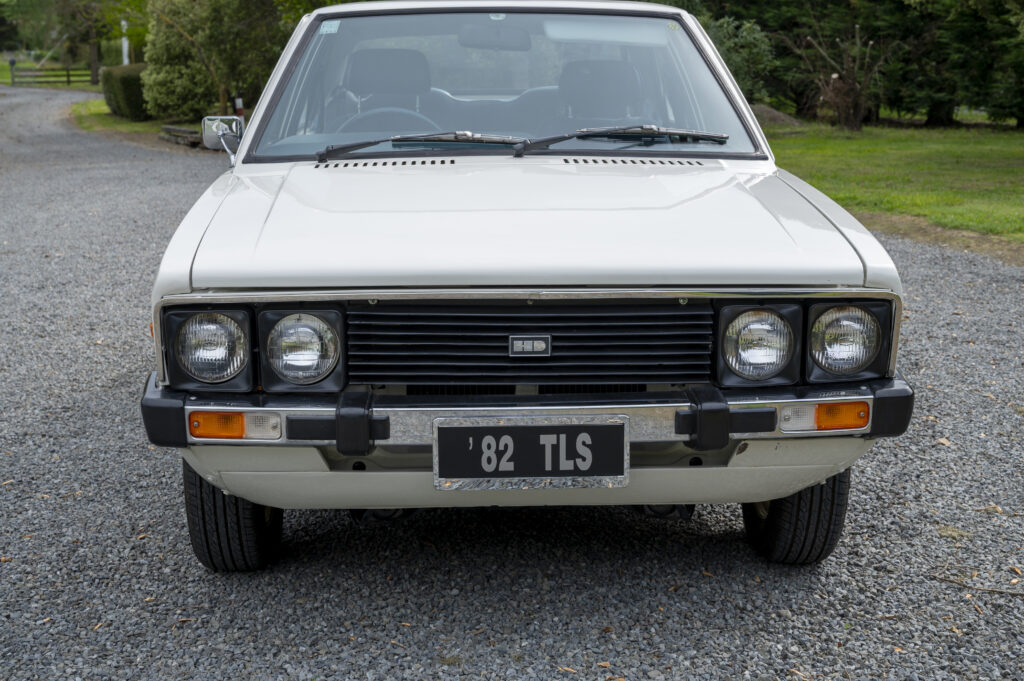
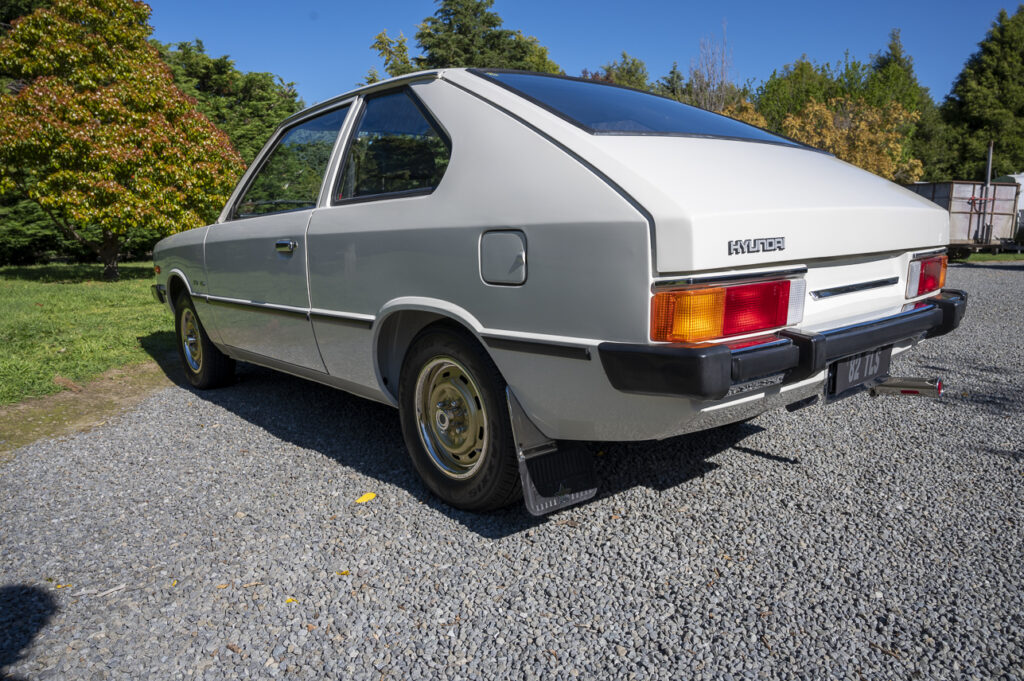
Performance tanked
I couldn’t make out why it would idle all day but as soon as I drove around a corner it would stall and not restart. The problem turned out to be a rusted petrol tank. I had petrol problems many years ago when I was restoring my 1936 Ford V8 Roadster, and I immediately thought of Canterbury Radiators, in Tuam Street, Christchurch. Sure enough, it was first-class service again. After flushing the surface rust out they coated the internals with a thick layer of some kind of heavy liquid. Many thanks again to this company. (I hadn’t been there since about 1988 but it looked just the same and so was the service.)
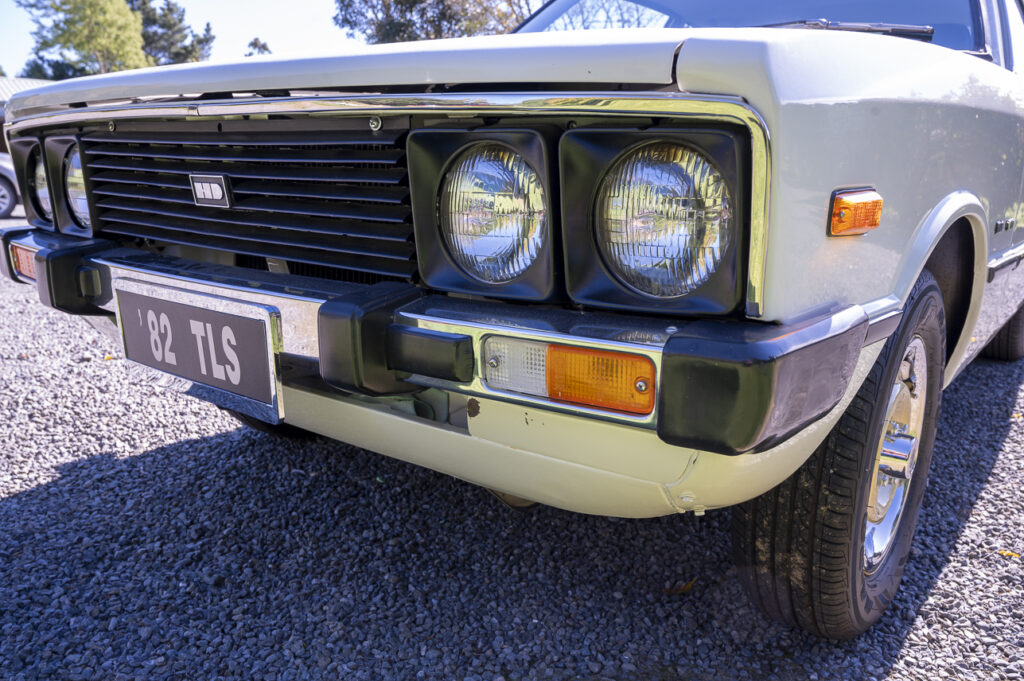
Concours correct tyre alignment
April 2019.
After having the five wheels sandblasted and painted in a non-original gold colour by Ryan at the Amberley paint shop where the body was painted, I had new Maxxis 175/70 R13 tyres fitted by Tyre General Amberley. I gave strict instructions to the tyre fitter to make sure that the valve was directly centre of the two x x. (A little advice among many that I wrote in this magazine a few issues ago on wheel and tyre presentation for concours competition purposes.) The early Hyundais were built using a variety of parts from other vehicle manufacturers. The motor is Mitsubishi, as is the gearbox. Ford supplied the wheels (Mark III Cortina), the door-opening mechanism, and chromed exterior handles. (Possibly more parts, but these are the ones I am aware of.) There is one other deviation l have made from the original and that is the fitting of Cortina Executive stainless steel wheel-cap centres and chrome-plated wheel nuts. The original cap centres were matt black plastic.
In late December 2020 we were finally ready to submit the wee car for a warrant. (Irene had put the registration on “hold” which in turn was carried through by her son Mervyn, from whom I purchased the car.) The front seat belts were rejected owing to sun fade of which I was not surprised. After fitting a new set, she was resubmitted and accepted with flying colours.
After five years and six weeks she was roadworthy once again, to take on an entirely new lease of life. I wish to pay tribute to Irene for keeping the car in wonderful condition for some 25 years and to her son Mervyn, who kept it undercover for a further seven years. Further thanks to my good friend Doug Moody, John Glass, Avon Bridger and especially Ian Stanley, for without his mechanical knowledge and help I may never have had the Pony “back on the road again”.
Also a big thanks to Tony, Mike, Stu and Ryan at North Canterbury Collision Repair Centre for their support and advice. They are all classic Ford owners, but that’s another story for another time.
Footnote: By pure coincidence, Irene passed away the day after I purchased the car off Mervyn. I am often asked what the letters TLS stand for. I reply, “Trevor and Lorraine Stanley”. People look at me not knowing what to believe. (I honestly don’t know what the letters stand for.) Someone said they look like “the result of a one-night stand between a Honda Accord Hatch and a DX Corolla. Maybe a distant cousin was a Morris Marina Coupé”. I am often asked about the current value of this very rare Hyundai. That is anybody’s guess. I would like to see it go to a classic car museum for display purposes.
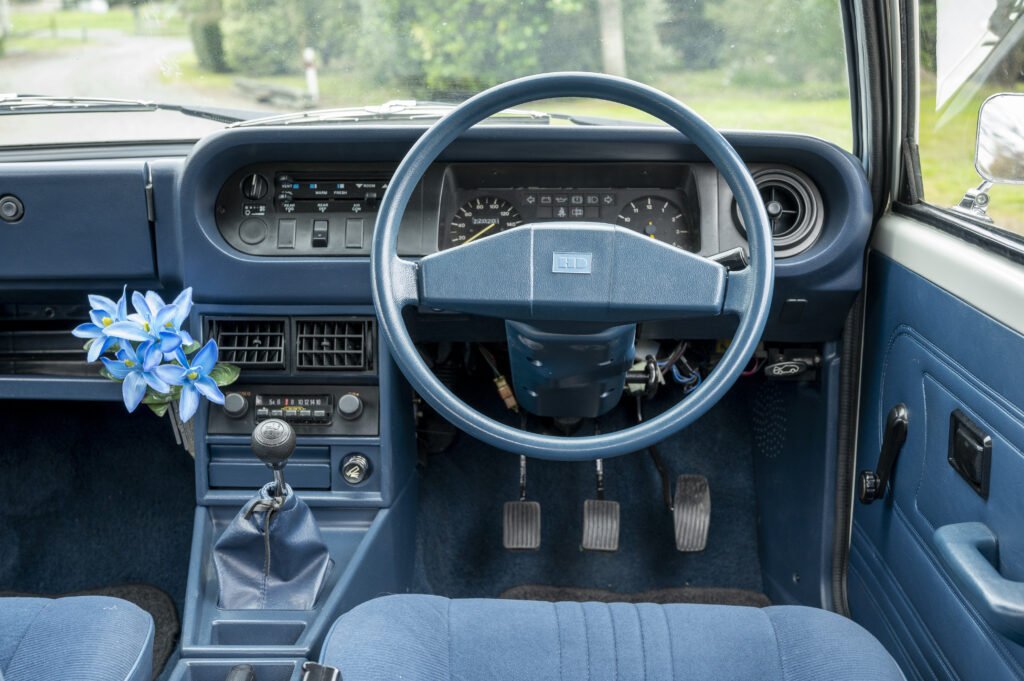
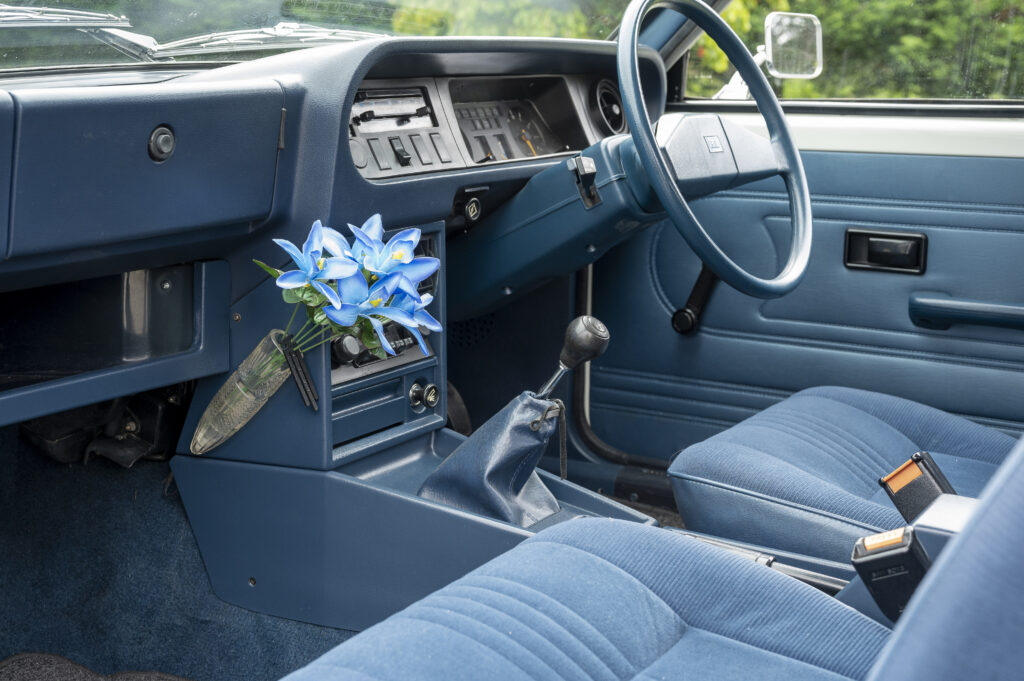

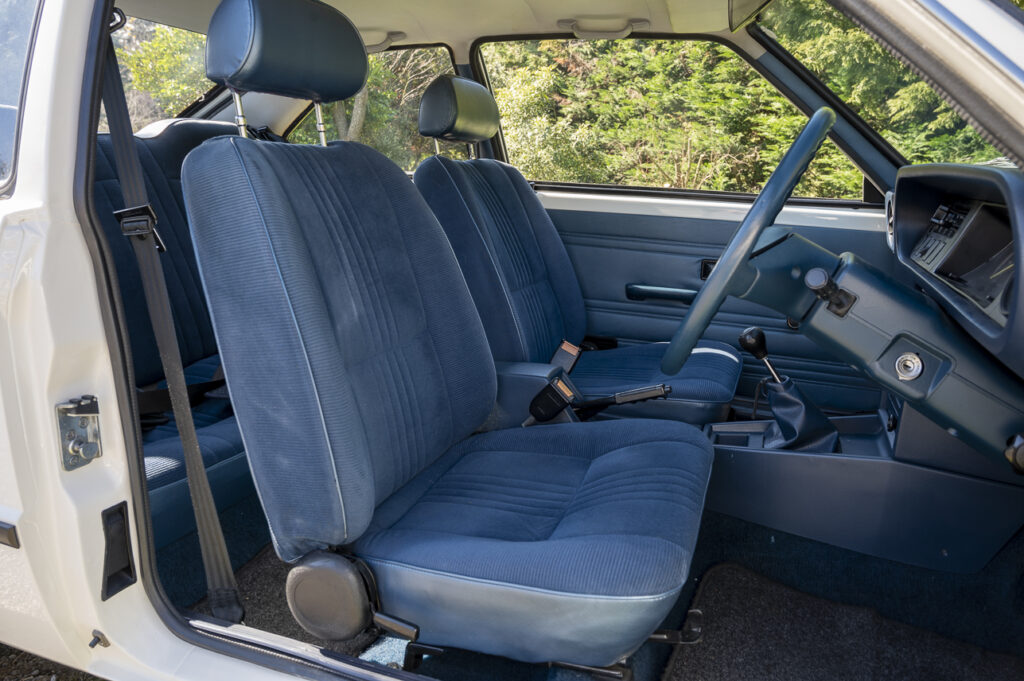
Handy and interesting man
A little bit of interesting information and background to Ian Stanley.
Ian started his mechanic apprenticeship in 1971 at the age of 16. This was at the Christchurch BMC agency of David Crozier Ltd. He is now approaching retirement but still loves his work. For the past eight years or so, lan has been working for lan Ffitch at Ffitch Racing, also known as Amberley Tyre and Auto. A very wide variety of vehicles arrive at the premises for maintenance or repair — rally, circuit, speedway, jet ski and classic vehicles. However, the majority are quad bikes — racing, farm and recreational. The owner, lan Ffitch, holds several racing records on quad bikes: Race to the Sky at Cardrona in 8min 43s; Rod Millen’s driveway in Hahei, Coromandel, in 51.83s. All because of Ian’s tuning abilities, combined with his heroic riding attitude. Or is Ffitchy just a crazy daredevil?
